
Sunchoke Puree (and blurring photo backgrounds)
Tweet
Sunchokes are also called Jerusalem Artichokes, but artichokes they are not and they are not from Jerusalem. In fact, they are tubers… though they are a tad related to artichokes. They come from a plant that is essentially a sunflower. According to the website www.wisegeek.com…
A sunchoke is an underground vegetable like a cross between a rutabaga, potato, sunflower seed, and water chestnut. Also called a Jerusalem artichoke, it is not like an artichoke bloom, nor does it grow in Jerusalem. It’s one of the few native tubers of North America. A sunchoke, related to the sunflower, makes a delicious addition to salad, salsa, marinade, and soup.
Native Americans enjoyed digging up and eating sunchokes for centuries before the colonialists settled. Myths about the dangers of this starchy tuber kept Europeans for cultivating them until the threat was proved superstitious and they embraced the tasty vegetable. The sunchoke got its new name when a French explorer sent some plants back to his friend in Italy to cultivate in the Mediterranean climate. Thinking they tasted like artichokes, the Italian named the tuber “girasole articicco,” meaning, “sunflower artichoke.” Americans corrupted the pronunciation, which they thought sounded more like “Jerusalem,” but the name stuck.
Staying on my 2009 plan to either try a new food or recipe each week, I bought a handful from Russo’s on Monday. I have eaten sunchokes before, but have never cooked them.
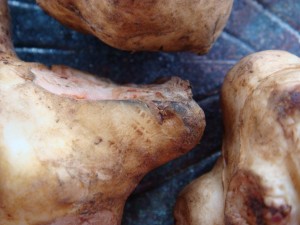
I took some pictures and liked them. Then I saw a photo on FoodGakwerthat pointed back to a lesson on how to blur the backgrounds on your food photos. I have been wanting to do this for a while, but since I have a ‘point and shoot’ digital, it’s easier said than done. So I installed an older version of Photoshop (v.7) on my laptop and went to town.
Click here for the blog post that provides step-by-step instructions on how to accomplish this effect. Her directions are very thorough and easy to follow. I wanted to start with just a subtle blurring of the background to see how it looked and this was my first and only attempt (so far).
This is the photo I started with:
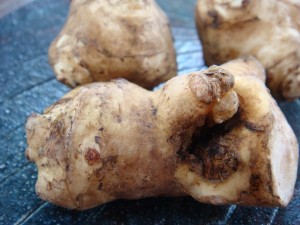
Before Photoshop
I followed the directions and applied a blur of “10 pixels”. This is the result… It’s subtle, but adds a nice visual (in my opinion):
Pretty cool, huh?
So now I had photos… but what to do with the actual sunchokes??? I was thinking a puree would be good, so I did a quick Google search and found a great recipe with Clementines… which I also had on hand — so it was perfect. It was from another blogger… who also writes for the New York Gothamist site, so I figured it was probably yummy. I made a few minor adjustments and this is what I came up with…
Sunchoke and Clementine PureeServes 2
3/4 lb sunchokes
1 tbsp fat free half and half
1 tbsp light butter
Juice from 1/2 clementine
1/4 tsp clementine zest
Salt and pepper to tastePeel the sunchokes… which can be a bit tricky because they are so bumpy. I didn’t want to lose too much flesh, so I peeled them by hand with a paring knife. Cut them into 1/2 cubes and place them in boiling water for 10 minutes.
Transfer to a container (or blender) and add remaining ingredients. Use hand blender to puree. I served mine with oven roasted salmon and sauteed garlic asparagus. DELICIOUS!
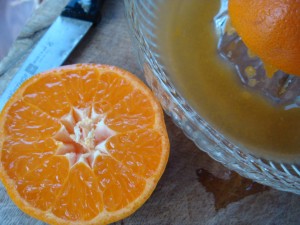
The clementines added a nice floral sweetness to the already somewhat sweet and nutty sunchoke, with the savory butter and the salt balancing out the flavor.
The crunch of the al dente asparagus added a nice texture to the creamy puree and all paired very well with the salmon. This puree would also taste great with pan-seared scallops and stands well on it’s own, with an almost celriac undertone to it. Very good…
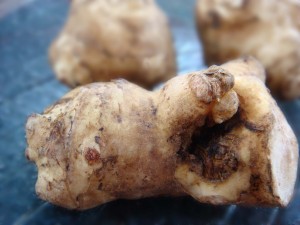
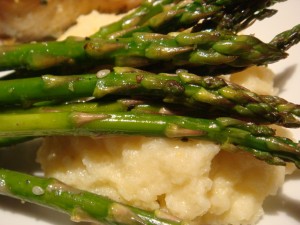

 (1 votes, average: 4.00 out of 5)
(1 votes, average: 4.00 out of 5)